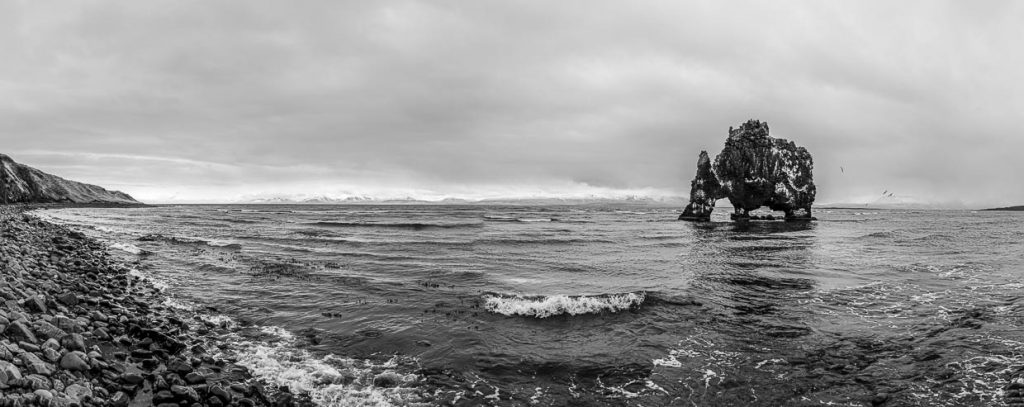Hvítserkur is a 15 m high basalt rock jutting out of Húnaflói Bay. In Iceland it is also known as the Troll of Northwest Iceland. Seals swim in the ice-cold water and the rock is a nesting place for gulls, crow shags and fulmars, whose droppings also help give it its white speckles. Hvítserkur therefore also means “white coat” in Icelandic. He seems very lively and is the cause of many Icelandic stories.

Folklore says that Hvítserkur was originally a troll from the Vatnsnes Peninsula. Like all trolls, he was afraid of Christianity and was determined to tear down the bells of Þingeyraklaustur Monastery. He was so angry that he did not notice the rising sun and instantly froze forever in its rays.
Many visitors say that Hvítserkur looks more like an elephant or a rhinoceros. With even more imagination, the rock can look like a dragon or dinosaur.
Speaking of the troll
It was not that great with the troll. They were most often encountered in sourvenir stores. Immediately followed by Viking folklore. In preparation for the trip to Iceland, one had the impression trolls and elves dominate public life in Iceland. Fortunately, it is the vast natural wonders that captivate you as you drive along the Ring Road.
Wondrous Iceland Stories
Magical, mystical, whimsical. On our trip through Iceland, we experienced overwhelming nature, enjoyed the benefits of geothermal energy and tasted many an outlandish dish or of the beer that was only legalized in 1989. In Iceland there are leader sheep, but under no circumstances ponies. Instead, the descendants of the Vikings today have heated sidewalks, still seething volcanoes and a lot of creativity, which in the long dark months is the best recipe against the onset of winter depression. Other Moment Mal episodes are about hairy beer bottles, petrified trolls and wishing stones. Fermented, cruelly stinking Greenland shark contrasts with rye bread baked in hot earth. The whales that regularly appear off Húsavík are a popular photo motif during whale watching.

